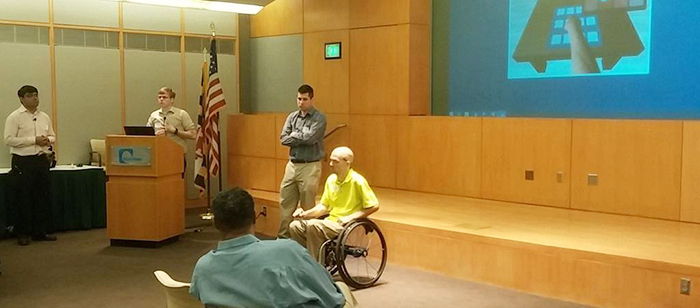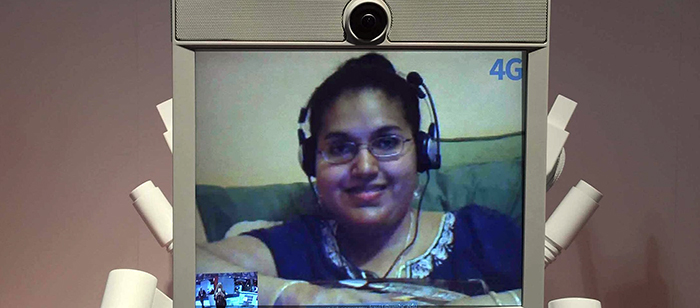
PhD Dissertation Defense Announcement
Electrical Engineering
Polarization-insensitive all-optical dual pump-phase trans-multiplexing from 2 × 10-GBd OOKs to 10-GBd RZ-QPSK using cross-phase modulation in a passive nonlinear birefringent photonic crystal fiber
Tanvir Mahmood
2:00pm Thursday, 24 September 2015, ITE325b
Considering the network size, bit rate, spectral and channel capacity limitations, different modulation formats may be selectively used in future optical networks. Although the traditional metropolitan area networks (MANs) still use the non-return-to-zero on-off keying (NRZ-OOK) modulation format due to its technical simplicity and therefore low cost, QPSK format is more advantageous in spectrally efficient long-haul fiber optic transmission systems because of its constant power envelope, and robustness to various transmission impairments. Consequently, an important problem may arise, in particular how to route the OOK-data streams from MANs to long-haul backbone networks when the state of polarization (SOP) of the remotely generated OOK is unpredictable. Hence, the focus of this dissertation was to investigate a polarization-insensitive (PI) all-optical nonlinear optical signal processing (NOSP) method that can be implemented at the network cross-connect (X-connect) to transfer data from a remotely and a locally generated OOK data simultaneously to more effectual QPSK format for long-haul transmission. By utilizing cross-phase modulation (XPM) and inherent birefringence of the device, the work demonstrated, for the first time, PI all-optical data transfer utilizing dual pump-phase transmultiplexing (DPTM) from 2 × 10-GBd OOKs to 10-GBd RZ-QPSK in a passive nonlinear birefringent photonic crystal fiber (PCF). Polarization insensitivity was achieved by scrambling the SOP of the remotely generated OOK pump and launching the locally generated OOK pump and the probe off-axis. To mitigate polarization induced power fluctuations and detrimental effects due to nearby partially degenerate and non-degenerate four wave mixings, an optimum pump-probe detuning was also utilized. The PI DPTM RZ-QPSK demonstrated a pre-amplified receiver sensitivity penalty < 5.5 dB at 10−9 bit-error-rate (BER), relative to the FPGA-precoded RZ-DQPSK baseline in ASE-limited transmission system. The effect of the remotely generated OOK pump OSNR degradation on the PI DPTM RZ-QPSK was also investigated and it was established that 10−9 BER metric was attainable till the remotely generated OOK pump reached the threshold OSNR limit of 34 dB/0.1nm. Finally, DWDM transmission performance of the PI DPTM RZ-QPSK signal was evaluated using a 138-km long recirculating loop and it was demonstrated that the PI DPTM RZ-QPSK can be transmitted over 1,500 km before it reached ITU-T G.709 7% HD-FEC overhead limit. This propagation distance was well beyond the transmission requisites of any typical metro network (≈ 600 km). Furthermore, it was demonstrated that, within the threshold limit, OSNR degradation of the remotely generated OOK pump had minimal impact on the transmission distance of the PI DPTM RZ-QPSK before it reached 7% HD-FEC overhead limit.
Committee: Drs. Gary M. Carter (Chair), Anthony M. Johnson, Fow-Sen Choa, Tinoosh Mohsenin, Thomas E. Murphy (ECE,UMCP), William Astar








